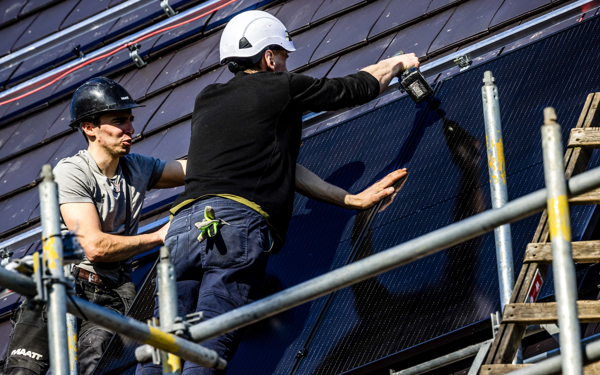Introduction
To minimise the economic impact of the coronavirus pandemic, it is crucial that the financial sector continues to function properly. Among other things, this means banks must be able to keep extending loans to firms and households. Since the financial crisis, banks have had to comply with increasingly stricter demands amid higher capital adequacy requirements and newly imposed liquidity buffers. On top of these stricter general rules, we imposed additional capital buffer requirements on Dutch banks. As a consequence, Dutch banks now have more headroom to absorb the consequences of the coronavirus pandemic.
We have taken two further measures that will provide Dutch banks with more leeway in these extraordinary times. First, the buffers they must maintain will temporarily be lowered. Second, a previously announced measure, under which banks must maintain more capital for their mortgage loan portfolios, will be deferred. In view of current developments, we consider this a prudent approach.
Lower buffer requirements will be offset later
The buffer requirement for the three Dutch major banks, ING, Rabobank and ABN Amro, will be lowered temporarily. This frees up capital which the banks can use to support lending to the Dutch economy. In due course, the lower requirement will be offset by a gradual increase of the countercyclical capital buffer (CCyB), which will ultimately restore the aggregate buffer requirements for these banks to current levels.
ING, Rabobank and ABN Amro are currently required to maintain a 3% systemic risk buffer, but their lowered buffer requirements will vary. While ING will need to keep a 2.5% buffer, that of Rabobank will be 2% and that of ABN Amro 1.5% (note 1). The main reason for the difference is that the future increase in the CCyB has a dissimilar impact on the three banks. As the CCyB is calculated on Dutch exposures only, the future increase will be relatively limited for ING, as it holds many international exposures. For ABN Amro, whose exposure is almost entirely limited to the Dutch economy, the impact of the CCyB increase will be the biggest. This is why the temporary reduction of the buffer requirement is the smallest for ING and the largest for ABN Amro. As a result, the extra room to manoeuvre will increase in line with the extent of the banks’ exposure to the Dutch economy. This supports the objective of the measure, which is to sustain lending to the Dutch economy. The reduction will enter into effect once we have consulted and notified the relevant European institutions.
We plan to restore the buffer requirements in due course by gradually increasing the CCyB requirement from 0% to a neutral level of 2%. The buffer can fluctuate around this level, depending on developments in lending. This buffer must be built up gradually once conditions have normalised and the impact of the coronavirus pandemic on the banking sector has faded. A key consideration for introducing the CCyB is that it must also work out more or less capital-neutral for the other banks.
The future introduction of the CCyB ensures that banks will in due course have more capital that we can release in times of crisis. This is because the CCyB can be lowered in stress situations to give banks the leeway required to sustain lending. The recent events with regard to the coronavirus pandemic testify to the desirability of such a possibility. In addition, the different systemic buffer requirements are a closer reflection of the differences between the banks in terms of size, complexity and interdependence.
Extra capital requirement for mortgage loans deferred
We announced a measure in October 2019 that would require banks to maintain more capital for their mortgage loan portfolios. Its objective was to bolster the banks’ resilience, given that systemic risk related to the Dutch housing market had increased. The measure was due to take effect in September 2020.
We have now decided to defer introduction of the measure until further notice, as it would subject the Dutch banking sector to a combined additional capital requirement of more than EUR 3 billion. Deferment means that this amount will be available to support lending. We will decide on the effective date later in 2020, and we expect this to be before the start of the gradual build-up of the CCyB.
Effect of the measures
The measures free up more than EUR 8 billion in bank capital – EUR 5 billion due to lower buffers and EUR 3 billion as a result of the deferred mortgage lending measure. It must be remembered, however, that the EUR 3 billion does not involve the relaxation of a requirement, but the deferred tightening. The combined impact of the measures equals roughly 5% of the Dutch banking sector's total capitalisation. While the total impact on lending cannot be estimated with any degree of precision in advance, it could well amount up to EUR 200 billion.
It is paramount that banks use this capital to support lending, and not to distribute dividends or fund share repurchases. The supervisor will closely monitor this and take enforcement action where needed.
Several other countries have taken similar measures to support lending. Canada and Finland lowered systemic their risk buffers by around 1%, Sweden reduced its CCyB from 2.5% to 0%, and the United Kingdom released its CCyB of 2%. Belgium, France and Germany likewise lowered their buffer requirements.
Note 1: For ABN Amro, not only the systemic risk buffer (SRB), but also the buffer for other systemically important institutions (O-SII buffer) will be reduced to 1.5%, from 2%. This is to prevent the 2% O-SII from being binding.








